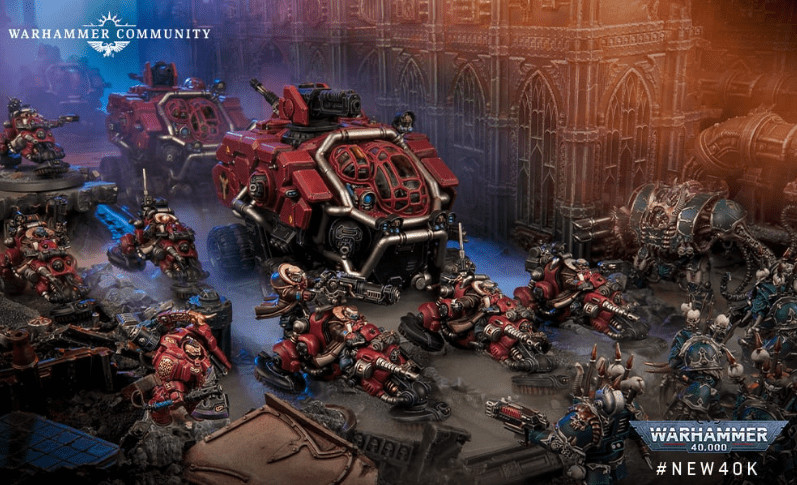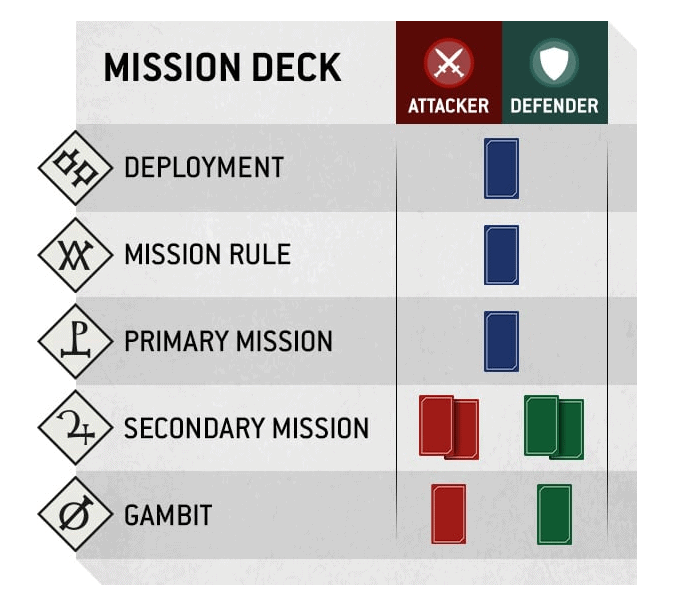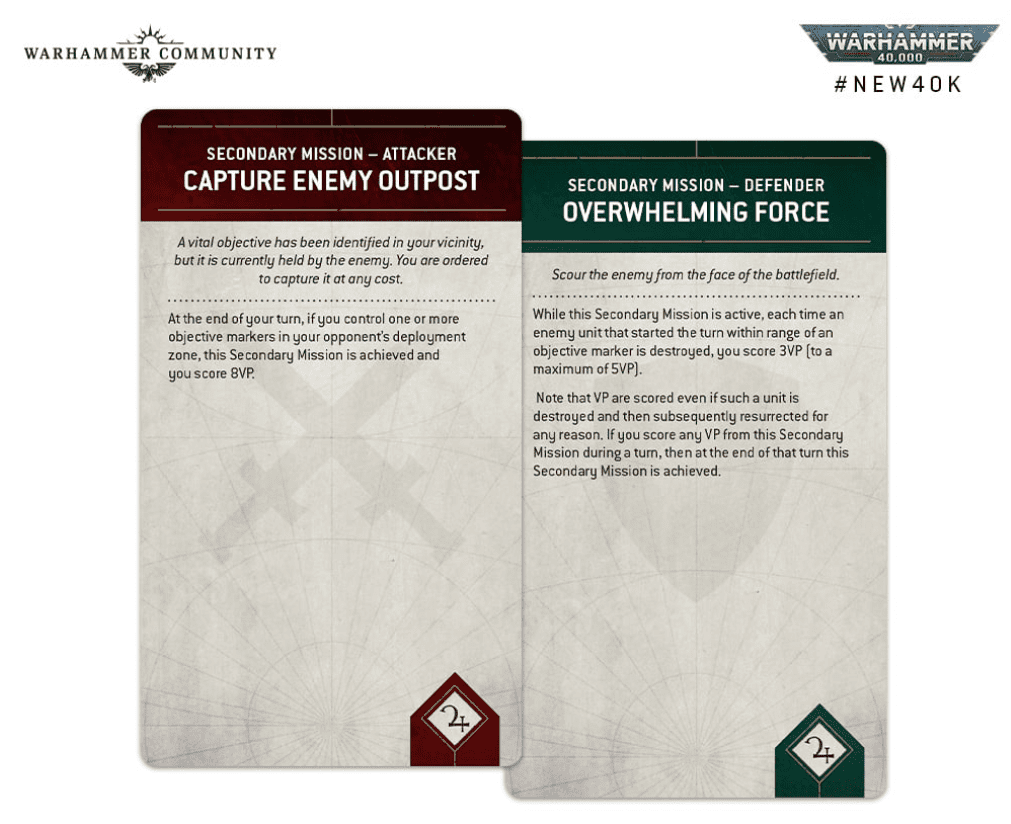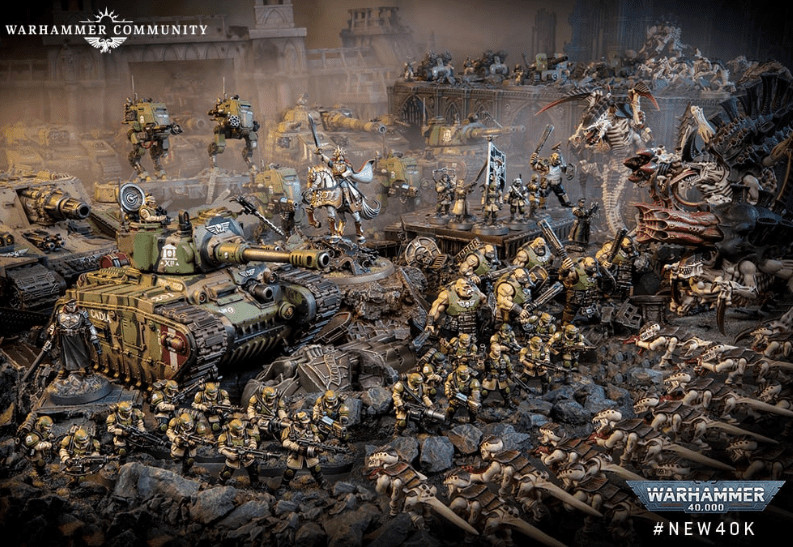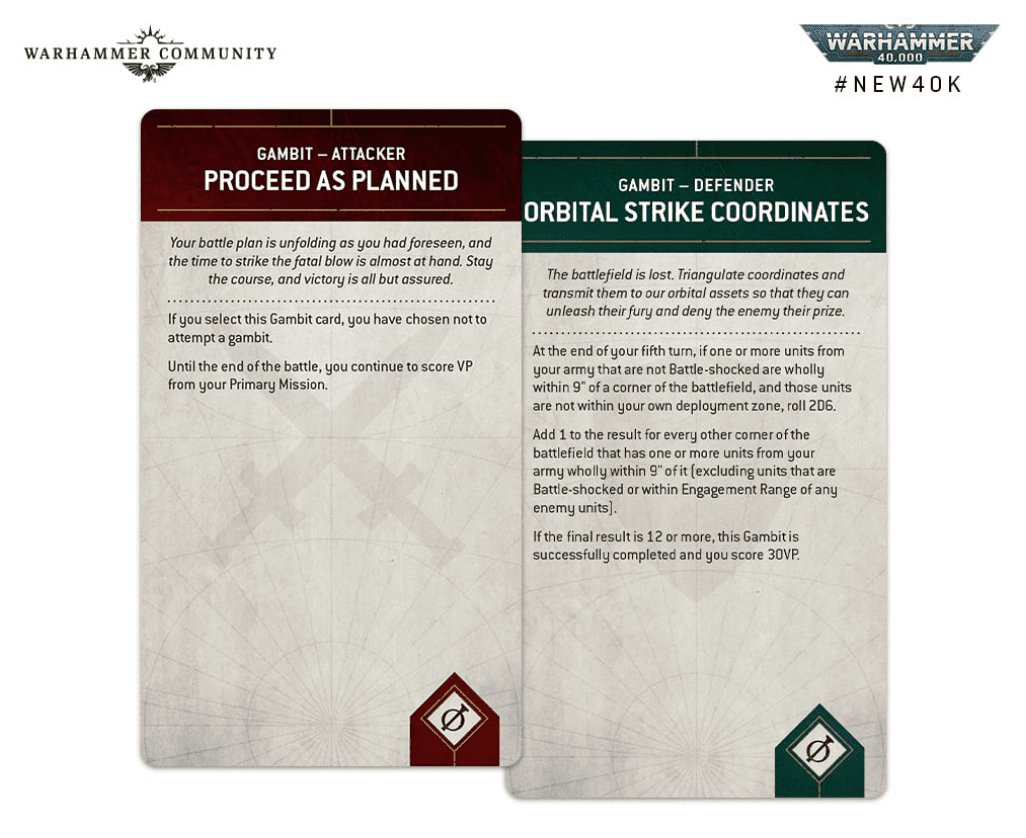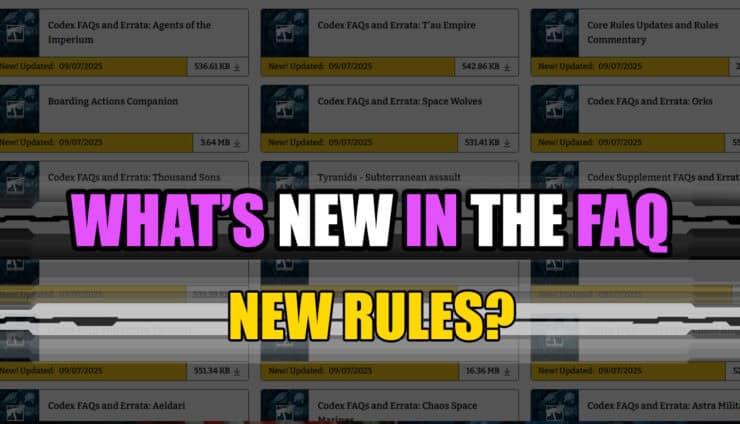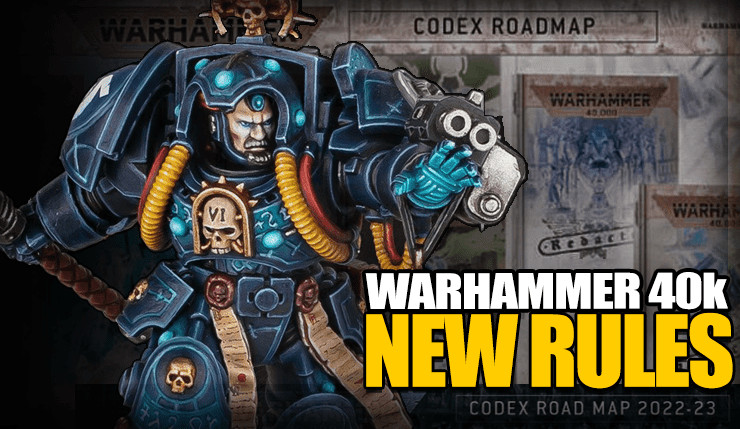 GW just revealed how 10th Edition Warhammer 40k Missions and Gambits rules will work in the new edition and how to win games!
GW just revealed how 10th Edition Warhammer 40k Missions and Gambits rules will work in the new edition and how to win games!
10th Edition 40k will be revamping the structure of how missions actually work. From the look of it, you can play either a tournament format (where secondaries and missions are pre-selected) or use cards to determine everything.
Then, Gambits are something new that will be put in every game and can be played after battle round three to try an in-game comeback.
They say the new system will make playing games easier and still support a tournament system, so it should be interesting!
Here are the quick links to the latest for 10th Edition Warhammer 40k and the full articles below!
- Warhammer 40k New 10th Edition Release Guide: LATEST
- New 10th Edition Warhammer 40k Starter Set & Models
- What Will Happen To Codex Books in 10th Edition
- All the Latest 10th Edition Rules Changes
- How to Build Army Lists in 10th Edition Warhammer 40k
Now let’s jump into the new rules!
New 10th Edition Warhammer 40k Missions & Gambits Change Up the Game!
These new rules previews come from Warhammer Community.
As you’d expect for a new edition, missions have changed in Warhammer 40,000. In fact, there’s just one in the Core Rules – entitled Only War, this is a perfectly balanced pitched battle in which two players fight for control of four objective markers, which they’ve taken it in turns to place.
These objectives are scattered across a battlefield of 44″x60″ at Strike Force (1,000 points) and Incursion size (2,000 points), or 44″x90″ for an Onslaught game (3,000+ points). With both players deployed on the short edges, It’s the perfect theatre for a thrilling battle.
We heard rumors that the table size would stay the same for 2k point games, so there is nothing too crazy here. Also, when a new edition comes out, there generally aren’t a ton of different missions.
Only War is only the beginning. The new edition features the Chapter Approved mission system – an evolution of both the popular Tempest of War cards and the Grant Tournament Mission Packs, allowing you to quickly generate balanced and varied missions for every game.
Here’s how they work: Firstly, pick your game size and muster your armies as usual. Then divide the cards into their respective decks: Deployment, Mission Rules, Primary Missions, Secondary Missions (one deck for each player), and Gambits (one deck for each player). At competitive events, these combinations may sometimes be defined ahead of time, but you’ll usually generate them fresh each time you play.
Nothing too crazy here, as you pick a card for deployment, the mission rules, and the primary. Then, each player will get to pick two secondaries and multiple gambits (one of which is discarded).
Shuffle each deck, and draw one card from the Deployment, Mission Rules, and Primary Mission decks. These are your shared mission parameters – the Deployment card shows where both sides deploy and where the objective markers are, the Mission Rules card explains any special rules in effect, and the Primary Mission explains how each side collects Victory points (VP).
This mission rule is very interesting because you don’t have to leave units behind to keep an objective as you do now. Instead, you can control it in your command phase, then just go ahead and move that unit up into the fray. We had heard that they would be “sticky” objectives in 10th, but now we know for sure!
Take and hold is pretty standard, and you have to control objectives to score (up to 15, even though there will be four objectives).
Once they’ve set up the battlefield and determined who’s the Attacker or Defender – but before actually deploying their armies – players select and reveal their Secondary Missions. These are personal goals they’re trying to achieve, like Assassination or Deploy Teleport Homer, which will allow them to score additional VP.
Each player starts with two Secondary Missions, and can either choose Fixed Missions – which remain in place the whole battle, reliable yet predictable – or take a risk with Tactical Missions, which offer greater rewards but must be replaced with a randomly-drawn card each time they’re completed. Both players can choose a different way to score, so you can play to the strengths of your army.
They are basically combining everything into one, meaning you can play where you draw cards each turn or just keep the same missions the whole game. What’s really interesting, is you can combine the two into one game, meaning one player can draw every turn, and the other could just keep the same missions.
The attacker’s card can be hard to do (but maybe easier based on the new OC system and end of turn), but scoring 8VP for one objective is pretty sweet. Overwhelming Force can be a great card depending on your army and score you some easy VP.
New Gambit Cards
Primary Mission not going as planned? There’s still hope – a daring Gambit may be your ace in the hole. At the end of the third battle round, either or both players may choose to play a Gambit card, chosen in secret from two identical decks.
Once a player reveals a Gambit, their original goal is thrown completely out of the window, replacing their Primary Mission with a completely fresh – and intensely challenging – new mission objective. They keep all existing VP, and their Secondary Missions, but can no longer score on the Primary Mission – instead, they must pursue their Gambit to the bitter end.
A Gambit is a risky prospect, but pulling it off scores an intimidating chunk of VP, allowing a losing player to snatch an unlikely victory from the jaws of defeat. Better still, they’ll ensure battles stay valid – and violent – throughout all five battle rounds.
This is a really cool extra mechanic because sometimes battles feel decided by this time of the game, and you can go from playing like normal, and instead go all out for the Gambit! We’ll have to play some games to see how this actually feels on the tabletop, but it sounds like a really cool idea.
This set includes three different Gambits – one of which is randomly discarded before you make your choice – allowing you to keep your opponent guessing. Of course, you can also reveal the Proceed as Planned card, in which case you continue with your original Primary Mission. You might even bluff your opponent into panicking and taking on a Gambit themselves…
If you’re ahead in the battle or are about to score a bunch of points, you can just play the Proceed as Planned card, and nothing changes. However, if you feel you can’t win, you can play a Gambit.
Orbital Strike Coordinates is pretty crazy, as you have to run your troops to the corners (and probably in your opponent’s side), but if you can get a few units into those corners, you might only have to roll a 10, and you’ll score 30 VPs!
This is really interesting and has a serious opportunity to swing the battle all with one roll, which could be really fun!
Check out the latest for Warhammer 40k 10th Edition, new releases, rules, rumors, and more!
Here’s the most up-to-date list of new Games Workshop bits from preview models that we should watch out for. Click on the gallery above to see dozens of Rumor Engines with new models still to be revealed!
- New Primaris Space Marines 40k Rules & Minis
- Warhammer 40k 10th Edition Rules & Rumors
- Even More Warhammer Going For Super Cheap on eBay
- Latest New JOYTOY Action Figures & Discounts for Warhammer 40k
- Get 40k RPG Books & Black Library Cheap On Humble Bundle
All the Latest Warhammer Rules & Model Rumors
What do you think about the new 10th Edition Warhammer 40k Missions and Gambits?
Let us know in the comments of our Facebook Hobby Group, and make sure you enter the latest monthly giveaway for FREE today!
Get ad-free hobby videos, a monthly crate of miniatures, and support some of the best creators out there for as little as $6 a month on Patreon!
